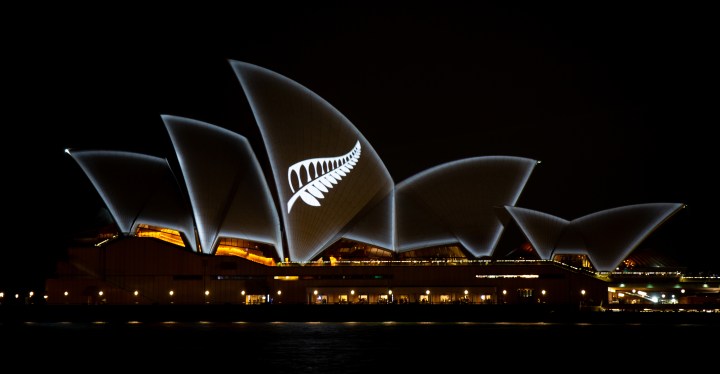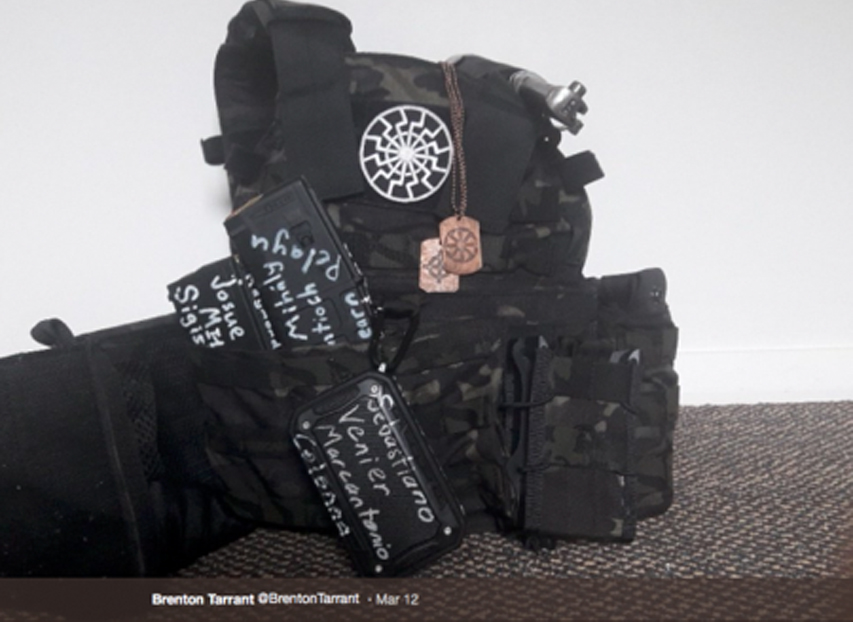OP-ED
Christchurch mosque massacre: The extremist voice on social media provokes action beyond policy and location

South Africa cannot ignore current trends in terrorism. We are living in an age where extremism, no matter where on the spectrum, seems irreversible, where extremist ideology is metastasising on social media networks as well as chat rooms and where policy paralysis only accelerates hatred and societal divides.
On 14 March 2019, South Africa woke up to the horror of multiple shootings at mosques during Friday Prayers in Hagley Park and Linwood (Christchurch, New Zealand), killing 49 people.
The attack on this peaceful Islamic community was carefully planned. The attack draws parallels with terrorism targeting places of worship, as anti-Islam rhetoric increases across the world.
Early reports indicate the attack was targeting higher numbers of worshippers than the shooting by Robert Bowers at the Tree of Life Congregation (Synagogue) in the Squirrel Hill neighbourhood, Pittsburgh, Pennsylvania on 27 October 2018. The attacker Robert Bowers’ account on Gab is self-described as “Jews are the children of Satan” and its last message was a threat to HIAS (a non-profit organisation that provides humanitarian aid and assistance to refugees):
“HIAS likes to bring invaders in that kill our people. I can’t sit by and watch my people get slaughtered. Screw your optics, I’m going in.”
Like other supremacist attacks, one of the attackers, Brenton Tarrant, espoused many conspiracy theories that reinforced his racist beliefs. Tarrant, a 28-year-old Australian, live-streamed his attack on Facebook after publishing his white supremacist manifesto on 8chan. In the video, Tarrant can be heard saying, “subscribe to PewDiePie” before carrying out the attack. PewDiePie, YouTube’s most popular creator with 89 million subscribers, has faced allegations that include Nazi imagery in his videos in the past, but he has since distanced himself from far-right movements. Tarrant posted photos on Twitter showing firearms bearing names including victims of terror attacks carried out by Islamic State supporters. Additionally, the words “for Rotherham” are written on a weapon, an apparent reference to child sexual abuse carried out by a group of Muslim men in Rotherham, England.

Tarrant’s manifesto wished to “make a stand to ensure a future for [his] people” – a reference to the infamous racist mantra, the Fourteen Words (“We must secure the existence of our people and a future for white children.”) Tarrant’s manifesto includes references to “the great replacement”, a white genocide conspiracy theory. The manifesto shows a man who was not only consumed with immigration but also promoted “kebab removalist” – a euphemism for ethnic cleansing promoted on the website 4chan.
In the manifesto, he denies that he is a Nazi or a Jew-hater or even a conservative. He considers himself an “Eco-fascist”. In general, Eco-fascists are inspired by Unabomber Theodore John “Ted” Kaczynski. Materialism, the pressure of working for a paycheque, and technology are seen as crushing the human spirit, and only destroying the establishment’s construct (as well as minorities) is seen as a way to resolve the problem. Outraged and revolted with modernity, Eco-fascists are not just white nationalists seeking to create their own nation, they are anti-globalists who wish to live as primitivists.
In the manifesto, Tarrant mentions that he was radicalised by video games.
“Spyro the dragon 3 taught me ethno-nationalism. Fortnite trained me to be a killer and to floss on the corpses of my enemies.”
Tarrant also credits the popular conservative commentator Candace Owens as a great influence of his own beliefs:
“Helped push me further and further into the belief of violence over meekness.”
Though Owens is African-American, she often pushes a white nationalist agenda on mainstream media including an anti-Islamic agenda. Tarrant also claims that Anders Behring Breivik was an inspiration. Breivik is a Norwegian citizen who has admitted to perpetrating Norway’s biggest massacre since World War II. He was responsible for killing 77 people and injuring 300 in Norway’s capital, Oslo, and on Utoya Island on 22 July 2011.
Breivik compiled a document titled 2083: A European Declaration of Independence, which is 1,518 pages comprised mostly of other people’s writings he had cut-and-pasted from the web. The document describes two years of preparation of unspecified attacks, supposedly planned for autumn 2011, involving a rented van loaded with 1,160 kilograms of ammonium nitrate/fuel oil explosive (ANFO), a Ruger Mini-14 semi-automatic rifle, a Glock 34 pistol, personal armour including a shield, caltrops, and police insignias. It also reports that Breivik spent thousands of hours on gathering email addresses from Facebook for distribution of the document, and that he rented a farm as a cover for a fake farming company in order to buy fertiliser for his bombs.
So what do these attacks mean for South Africa?
Those willing to act on extremist ideology remain confined to a few individuals and groups, irrespective of bogus claims to represent a much bigger audience, be it a so-called white race or the Ummah (espoused by the Islamic State and al Qaeda). The New Zealand massacre is a grim reminder that it only takes a few individuals to execute acts with severe consequences.
A policy does not act as a firewall against acts of extremism. The New Zealand Government’s position on, for example, refugees, states unequivocally:
“New Zealand’s refugee policy reflects the Government’s commitment to fulfilling its international humanitarian obligations and responsibilities. Through refugee policy, New Zealand contributes to the global community’s efforts to assist refugees in need of resettlement. The Refugee Quota Branch (RQB) is the branch of Immigration New Zealand (INZ), which is tasked with operating the Refugee Quota Programme. INZ in turn, sits within the Ministry of Business, Innovation and Employment (MBIE). The New Zealand massacre is a clear indication that the world might be in store for more stochastic terrorism. The term stochastic terrorism is defined as using language and other forms of communication to incite random acts of violence that are ‘statistically predictable but individually unpredictable’.”
Irrespective, the extremist echo chambers of social media are self-absorbed in hatred and a theatre of word, blood and action that has little respect not only for human life but also a government’s policy. The influence of social media on Tarrant cannot be underestimated.
Social media chat rooms transcend distance, and the words of Aaron Y. Zelin (Washington Institute) speak directly to South Africa:
“We are in an era of extremisms. They all feed off one another and are hyper-charged by algorithms and globalisation. Jihadists were first to exploit [this] in large way, [the] far right has learned from them, expect other extremist trends to learn from both as reactions.”
South Africa might not be located near New Zealand, the United States or Europe, but for a conspiracy theory calling upon violence, distance has neither place nor meaning. The Austin, Texas-based social media network Gab has generated controversy and attracted far-right extremists since its inception in 2016. At 310,000 members and rising, the site is a legitimate alternative to Facebook and Twitter, where codes of conduct/regulations concerning hate speech are becoming more stringent for right-wing militant activity. Gab’s code of conduct/community guidelines prioritise free speech and assert that censoring content be left to the user (members can filter out words or phrases they don’t want to see on their timelines).
For participants in the extremist right, the network offers a platform to spread content from other media staples like Daily Stormer and generate new memes and conversations on mainstream media news stories. For those on the extremist right who may seek to be more militant, the migration to Gab will be more nuanced – the stringency of Gab’s self-policing is yet to be determined. However, since at least 18 December 2017, the more popular and very influential far-right commentators like Richard Spencer and Daily Stormer editor Andrew Anglin each have over 10,000 Gab followers.

Gab is but one example of echo chambers available: The website blog Fascist Forge (FF) was created in Spring 2018. In the words of its founder, known only as Mathias, the website’s purpose is to give fascists “an online platform to make connections, share resources, organise, and ultimately further the Fascist Worldview….. The purity of our worldview is our highest ideal and we have zero tolerance for anything that opposes it”, Mathias wrote in a post dated 9 May 2018, adding that FF was intentionally “modelled after” the infamous Iron March website and intended to pick up where Iron March left off.
The main message board is simple in design and uncomplicated in terms of technical development, perhaps an indication that Mathias has created the website alone and doesn’t have the computer coding knowledge nor the graphic design skills to make the website more splashy. The topics range from introductions from new members to how to live the best fascist lifestyle, to ideologies. The blog is divided into seven sections (Announcements, General Discussions, Theory, Resource Center (Education), Recommended Sites, Social Media and Donations). Donations are accepted in electronic currency: Bitcoin, Monero, and Ethereum.

Terrorism Research & Analysis Consortium: Images (above): Screenshots of Fascist Forge Website Launch. 08 May 2018
Though not the intent of this article, the manner in which the West is responding to Islamic State male and female foreign fighters being held in camps – the West being unsure of how to deal with these fighters – is a sign of concern for policy paralysis: the inability to act decisively and thereby countering the actual enemy: an extremist idea. The West prefers to call these attacks by names other than terrorism.
In the case of the New Zealand attack, this aspect resurfaced, with the shocking response of Senator Fraser Anning playing into the hands of white supremacists (terrorists), blatantly equating Islam with violence:

Western policy paralysis – the inability to deal with various forms of extremism in a decisive manner derived from its own constitutional values and therewith creating a vacuum for extremism – is noteworthy in a tunnel vision confined to religious extremism, whereas other forms of extremism are provided with the convenience of a comfort zone of spreading hatred at a global scale with no fear of accountability.
The warning by Colin Clarke, an adjunct political scientist at the RAND Corporation, was recently quoted in an article by USA Today – “New Zealand shows America’s mass shootings have global consequences” – cannot be ignored: “But while we pay a lot of attention to jihadist terrorism, we’ve been very slow and stubborn to realise that right-wing terrorism is very global, too.”
The above should be a reminder to South Africa that the massacre in New Zealand is a clear indication that the world might be in store for more stochastic terrorism (as defined above).
South Africa is not immune to acts of terrorism. The fast pace of globalisation, instant news coverage, vast social media platforms and ease of movement of people, goods and money means that any country could be targeted. It is especially over the past 10 years that even the issue of terrorism became an issue of global terrorism, with more and more people, countries and governments taking sides in the so-called global war on terrorism.
We have also seen that many countries serve as a breeding ground for the radicalisation and recruitment of especially the youth, to join not only religious international terror groups, such as al Qaeda and the Islamic State, but also white supremacists.
South Africa cannot and must not ignore extremism and it must refrain from simplistic conclusions. This begs the question: Is South Africa going to be caught up in a bubble of fantasy about how it is safeguarding itself against extremism or are we going to facilitate the formation of an intelligence counter-extremism capacity to guide and direct our policy-makers on our vulnerabilities in an informed, precise manner? The choice is ours. DM
Jasmine Opperman is Director of the Africa Terrorism Research and Analysis Consortium (TRAC)


















 Become an Insider
Become an Insider